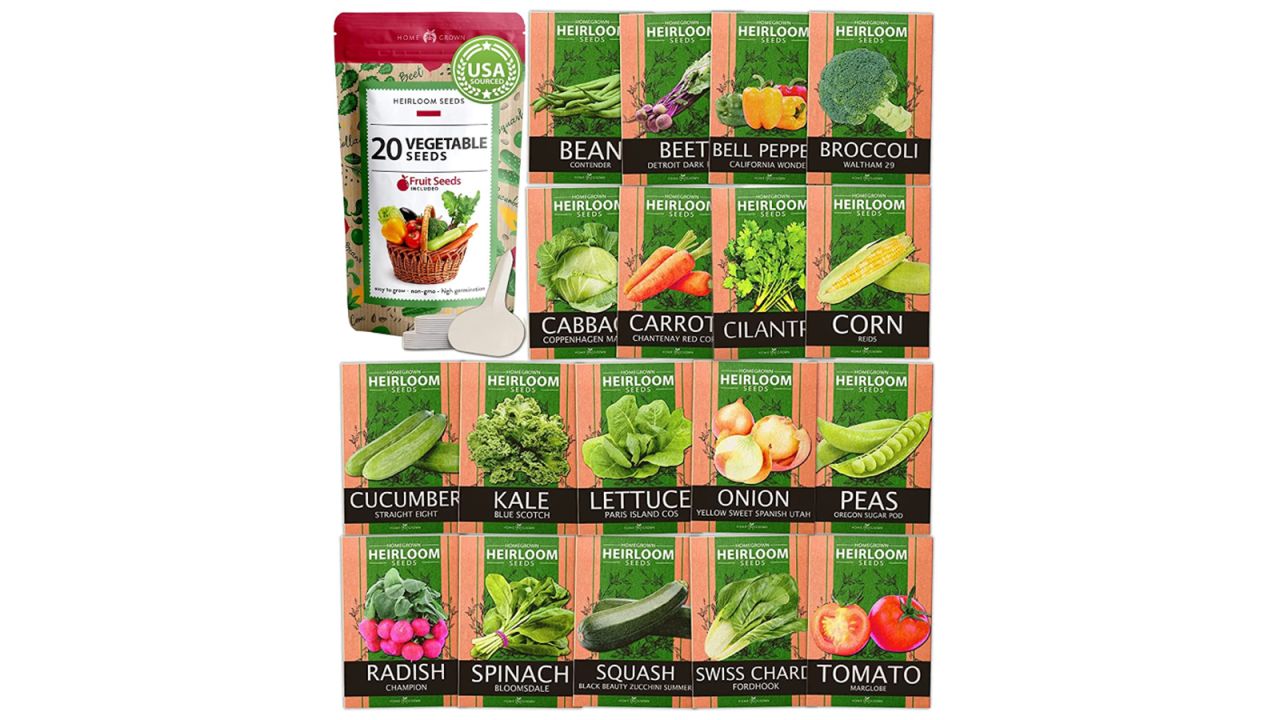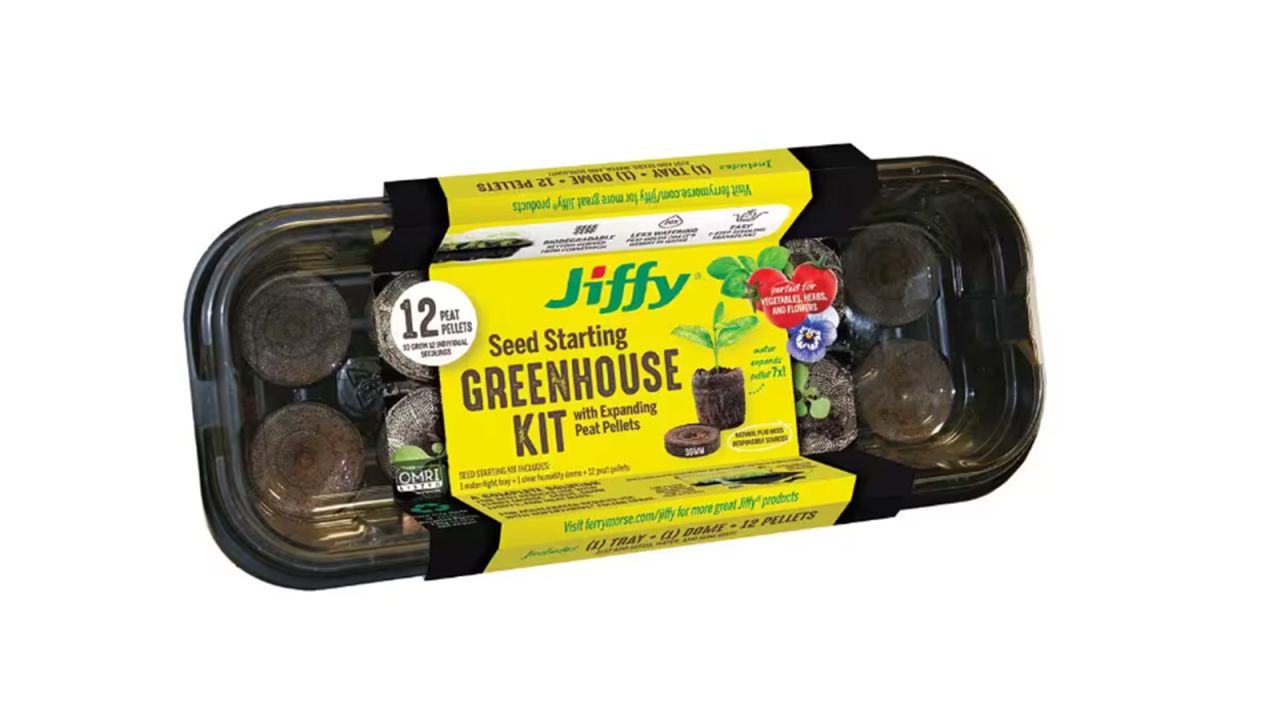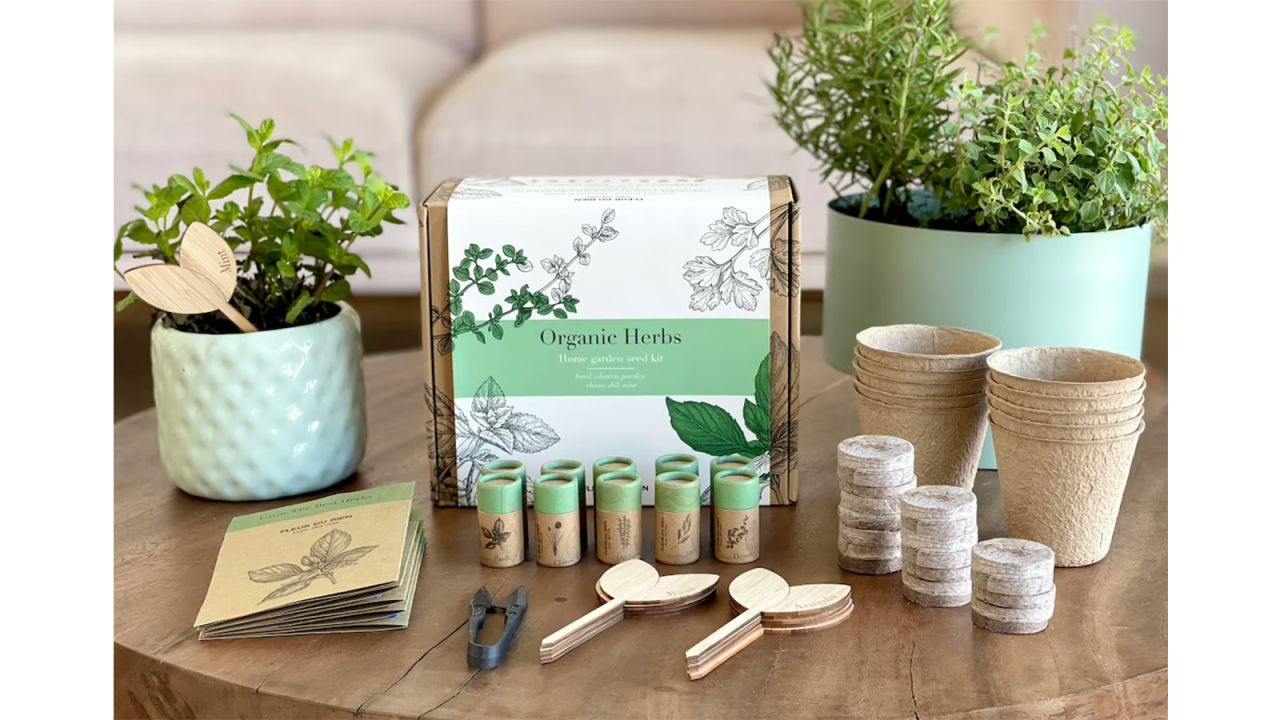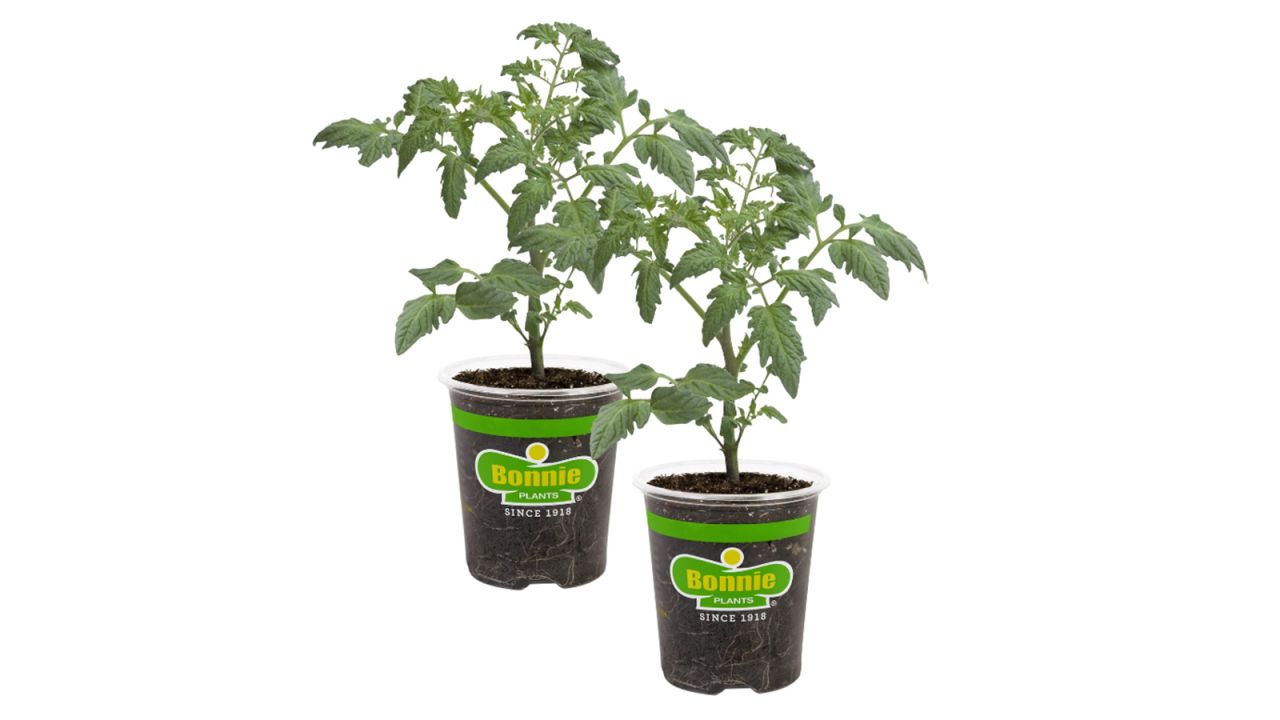It didn’t take long after stay-at-home orders for many of us to start getting crafty. First came sourdough and banana bread, but as the weather warmed, we started looking outdoors. Many people are finding social distancing a powerful motivator to start growing their food for the first time. And getting started is a lot easier than you might think. The rest, you can learn as you — and your garden — grow.
YouTuber and blogger CaliKim, who wrote “Organic Gardening for Everyone,” has inspired countless gardeners. She recommends being clear about your reasons for starting a garden to stay motivated. And don’t expect magic overnight: New gardeners may find it challenging to grow enough food to significantly reduce trips to the store. But they will get the benefits of always having fresh herbs at the ready early on.
The first step is, of course, setting up your garden. While home gardens come in nearly infinite shapes and sizes, there are three basic categories: indoor gardens, container gardens on a patio or porch, and backyard gardens. Even if a big backyard is available, a small garden may feel like a more sensible way to start. In fact, many gardeners have a mix of containers, plots and kitchen herbs. Growing space also doesn’t necessarily limit what to grow: A small porch can be home to several lush tomato plants, for example. Playing around with it and experimenting is half the fun.
Even an apartment dweller can start a garden at home. In fact, one of CaliKim’s favorite first-time growing projects, a head of lettuce, can grow indoors. Containers, potting soil and seeds are all that’s needed to get started. To keep costs low, use existing containers — like pie pans or food storage containers — as pots. But it’s important to get the right potting mix. Here’s what you need to get started growing indoors.
A potting mix specifically formulated for containers is essential. CaliKim loves Good Dirt potting mix, which can be used over and over again. (Most potting soils break down and can’t be used in subsequent growing seasons.)
This self-watering container takes a lot of the guesswork out of gardening. Leave it on a counter or install it in a window or porch and let the magic happen.
Usually, a sunny windowsill can support an indoor garden. But if you don’t get much light, or don’t have a spot to place a plant near sunlight, this small grow light can do wonders.
If you want an indoor garden setup that removes the guesswork, AeroGarden’s hydroponic growing system is an editor favorite. It includes an LED grow light, and seed pod kits let you grow everything from salads to herbs to flowers.
These lightweight scissors are great for harvesting tender herbs as well as for prepping them. Stem strippers between the handles allow you to quickly pull delicate leaves off stalks.
Not sure where to start? Lettuces grow quickly and grow year-round. This book on growing lettuce and microgreens indoors is written with small kitchens and homes in mind.
If you have some outdoor space, container gardens offer a lot of flexibility: it’s easy to move plants around for better light, or even indoors in case of unexpected frost. You might be surprised just how much you can grow in containers. Here’s what you need to grow and harvest a delicious container garden.
A balcony or other small outdoor space can become a bountiful garden with this approximately 30-inch by 18-inch raised wooden garden bed. The shelf underneath is perfect for storing the watering can and gardening tools or more plants in pots.
CaliKim likes fabric containers for container gardening. Lighter than terra cotta, they also let the roots breath and prevent root circling, a process where the roots grow around the plant and can eventually choke it. These pots are great for root health of container plants and can be easily washed and stored between growing seasons if needed.
This is a must-have for many balcony gardeners. If gardening in a small outdoor space means too much harsh direct sunlight for part of the day, try clamping this Versa-Brella to any railing, chair or other nearby object to shield delicate starters.
Containers often require more watering than in-ground gardens. If you don’t have a hose on your back porch or patio, a large watering can is a must.
A good hand trowel can last for years and costs about as much as two lattes. This well-rated option from Fiskars is light enough to be comfortable but strong enough to cut through packed dirt.
Randy Schultz, the content editor for Home, Garden and Homestead, recommends City Jungle planters for terraces, which are more space-efficient than several large round buckets or terra cotta planters. Bonus: They’re self-watering.
This quick-reference guide to growing food in pots has all the basic info needed to make a fruitful container garden in any outdoor space.
Ah, the backyard garden. If space is available, it really opens up the possibilities. Just make sure, whether you’re using raised or in-ground beds, that you’ve got good-quality soil. CaliKim suggests reaching out to landscapers about buying soil in bulk to get your garden off the ground.
CaliKim also encourages gardeners to be creative: Think about repurposing an existing flower bed or plot of shrubs or other decorative plants. In-ground gardens require a bit more grunt work. The most important elements are a digging shovel and sweat equity. A full-sized shovel will come in handy whether setting up an in-ground or raised bed.
Sturdier than the cheap wire tomato cages, these also fold flat for storage, meaning they can be used season after season.
Schultz loves his CobraHead weeder, which can lift weeds and cut through roots with ease. This Fiskars Weeder is also highly rated and a fraction of the cost.
Raised beds are an affordable DIY project, but do require tools and time. Kits are more expensive, but offer convenience and can be set up alone in minutes.
Even a raised bed garden will require some kneeling and crouching. A comfortable kneeling pad will make it easier to tend to the garden — so you’ll be more likely to do it!
A few minutes of gardening per day can add up to hours of sun exposure over a season. Protect yourself by wearing a hat that provides good coverage and keeping arms and legs covered in lightweight layers.
One thing that makes gardening so enjoyable is getting closer to the earth. Well, these clawed gloves turn hands into tillers and make digging in the dirt both productive and tons of fun.
You don’t need much guidance to start an outdoor garden with a few plants or herbs as a hobby. But if you’re looking to grow a major portion of the produce you put on the table, a reference book is essential. This book looks at how to grow up to 85% of a family’s food on as little as a quarter of an acre.
There are tons of plant foods and additives out there, but you really just need a good soil and some compost, says CaliKim. No matter where you plant your garden, you’ll want to layer some compost on top to feed the plants, and add it every month or so throughout the season. Compost can literally be free if you want to make it yourself, but you can also purchase it at a garden center.
Many composters keep a small bin in the kitchen that gets transferred to the bigger bin (see below) in the backyard as needed.
A rotating composter eliminates the need to mix kitchen and yard scraps by hand. This bin is also divided into two chambers, allowing you to fill one side with organic material while the other side decomposes.
For an extra boost, CaliKim also likes worm castings, which are, erm, worm poop. You can use them in your houseplants and flowers as well as your veggie and herb garden.
Just as there are countless ways to set up a garden, there are countless delicious delights to grow in it. For many in the US, it’s a bit late this year to start growing from seed, which is a reason starter plants are a good option. But plants that can be harvested within 90 days of planting are still OK to plant from seed. Look at the back of seed packets to get an idea of harvest times. Or, to find out what to plant when based on where the garden will grow, check out Burpee’s Growing Calendar — just enter any zip code and follow the steps to see a full planting calendar. Also, to really geek out, this chart on what plants like to grow together from Heirloom Organics is a solid read. We’ll bet you didn’t know that lettuce doesn’t like growing next to parsley.
The best piece of advice, however, is fairly simple. “There is no point in growing edible plants that you don’t enjoy,” says Schultz. Your palate should be the biggest factor in deciding what you’ll grow.
Salad greens are surprisingly easy to grow from seed. Homegrown tomatoes are popular not just because they taste amazing, but because they’re “abundant and easy to grow,” Schultz says. Other plants he recommends for beginners are peppers, squash, Swiss chard and cucumbers. All can grow in a container or garden bed, and some can even grow indoors. This kit comes with 20 different options to grow — including most of those mentioned above — and is also available in a 55 vegetable variety if you really want to expand your garden.
This collection of easy-to-grow seeds includes vegetables that can be planted throughout the summer growing season and even into the fall, like kale, radishes, carrots and peas. And we’re suckers for the cute packaging.
Peat pellets let you space out your seeds for optimal depth and distancing during the early stages of planting.
Perfect for a little indoor kitchen garden, this has everything needed to grow 10 varieties of herbs in small containers. After they’ve sprouted and are thriving, move the plants to larger pots to increase yield.
Starters, or transplants, are great for beginning gardeners, especially when it comes to tomatoes. In fact, it’s not too late to plant tomatoes. This starter plant will produce fully mature tomatoes in just over two months. If it’s still above 50 degrees at night in August where you are, plant these now for a late summer harvest.
Seeds and starters come with instructions on how to plant them, and how much space to put between plants. Using a starter also cuts down on the waiting time between planting and harvesting. This basil grows great in late summer and is a perfect companion to a tomato plant. Caprese, anyone?
While it’s easy to read (and read and read and read) about gardening, the best lessons are learned through doing. In fact, CaliKim counsels new gardeners to expect some failures. If you’re growing outdoors from seed, keep some starters indoors in case a visiting critter makes off with some broccoli, for example. If the starters end up not being needed, you can use them as tasty microgreens added to salads.
Even with planning, there may be some outright failures along the way, but you can think of them as learning opportunities. Maybe next summer try planting something in a different corner or different type of container. Or maybe decide that a self-watering planter is the best defense against forgetfulness. As a garden grows, the gardener will learn and grow too. Now roll up those sleeves and get started!
































